Halloween Traditions and Ghosts at UNI
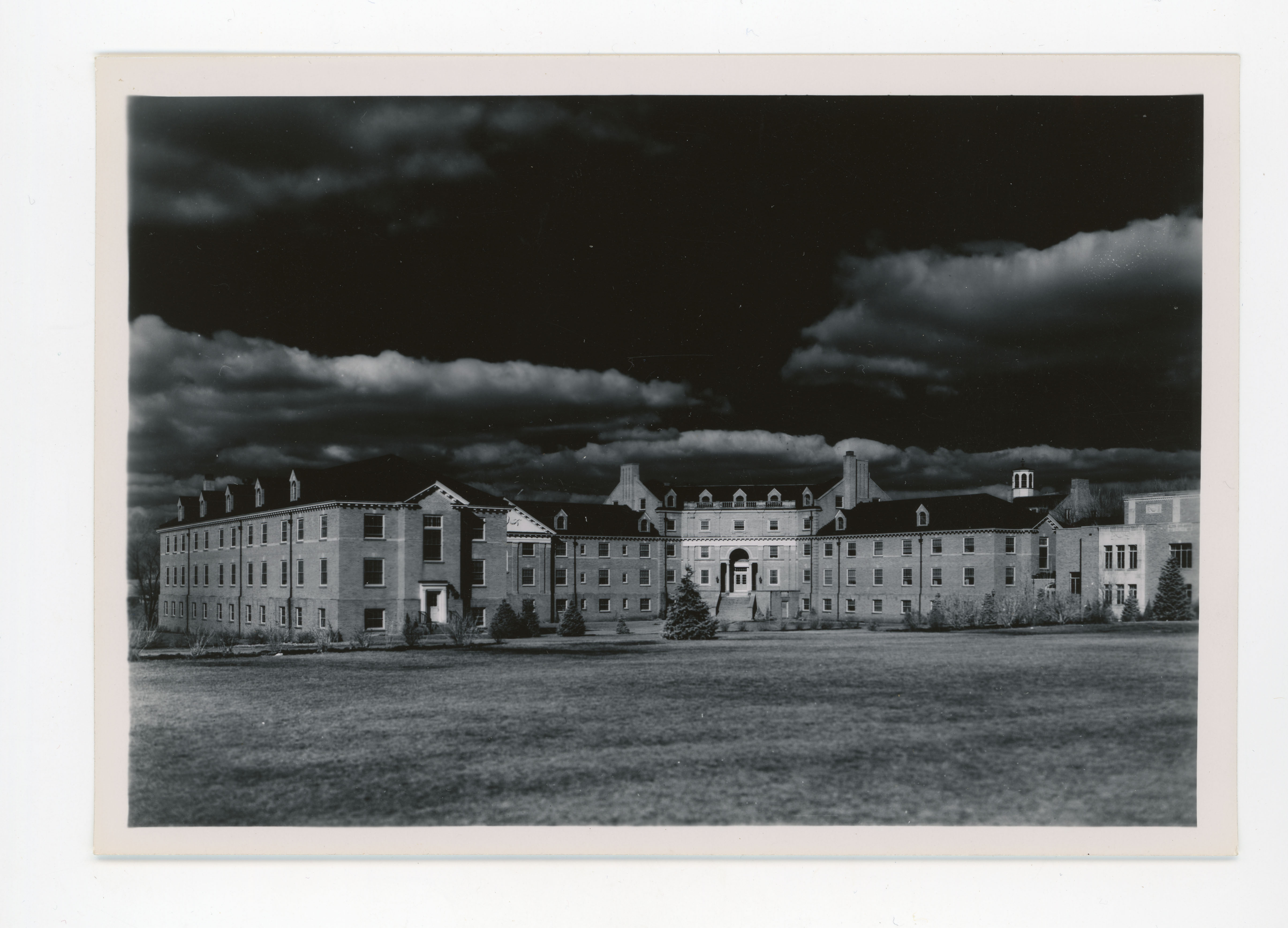
A Haunting Introduction
Halloween parties have been a longstanding tradition at the University of Northern Iowa. In the late 1800s, rooming houses held their own Halloween parties that included pumpkin carving, taffy pulls, and games. It was a time before movies, radio, and television; students tended to make their own entertainment. As the student newspaper, the Normal Eye, recorded in November 1895:
On Halloween evening the young ladies of Bley Hall most successfully entertained a number of Normal friends. The evening throughout was spent in that happy and helpful association which lightens the burdens of life, cheers the lonely heart, and makes school days indeed more pleasant. All who were present thoroughly enjoyed themselves, and are now wishing that more Halloweens might soon come. These ladies never do anything by halves.
By the 1910s many organizations held their own parties. Included in some of these parties was the initiation of new members. Frequently, the new members had small pranks played on them.
In 1911 members of the Cap and Gown Club enjoyed a cider keg. Boys wore overalls and dressed liked scarecrows. Other "eats" included doughnuts, apples, and popcorn. A tradition from the parties that developed in the 1910s and continued for several decades thereafter was fortune telling. Many times the entertainment at these parties included a witch who revealed the future of those who were at the parties.
By the mid-1920s, three hundred people attended the All College Spook Party. Students came dressed in costumes; games, stunts, poetry readings, and ghost stories were part of the entertainment. These parties were sponsored by the YMCA and the YWCA.
Individual organizations and residence halls also continued to have their own parties. In 1933 Bartlett Hall held a Halloween Dinner attended by 143 women. In 1935 Bartlett Hall held a party that included recreational dancing and other activities.
Halloween activities in 1944 included a Halloween Party held by the residents of Seerley Hall. There was a haunted room and a carnival atmosphere that again included fortune telling, singing, and refreshments.
Other parties held in the 1940s included dancing, games, entertainment such as a horror movie, Mr. MaGoo film strips, and shuffleboard on the balcony of the Commons.
In the 1950s there were pajamas parties on Halloween. In 1952 Halloween was celebrated early on campus so that it would not conflict with Homecoming.
Organizations and residence halls have continued hosting Halloween events. Some of the events have been for their own members and residents, but many times the events have been open to all students across campus.
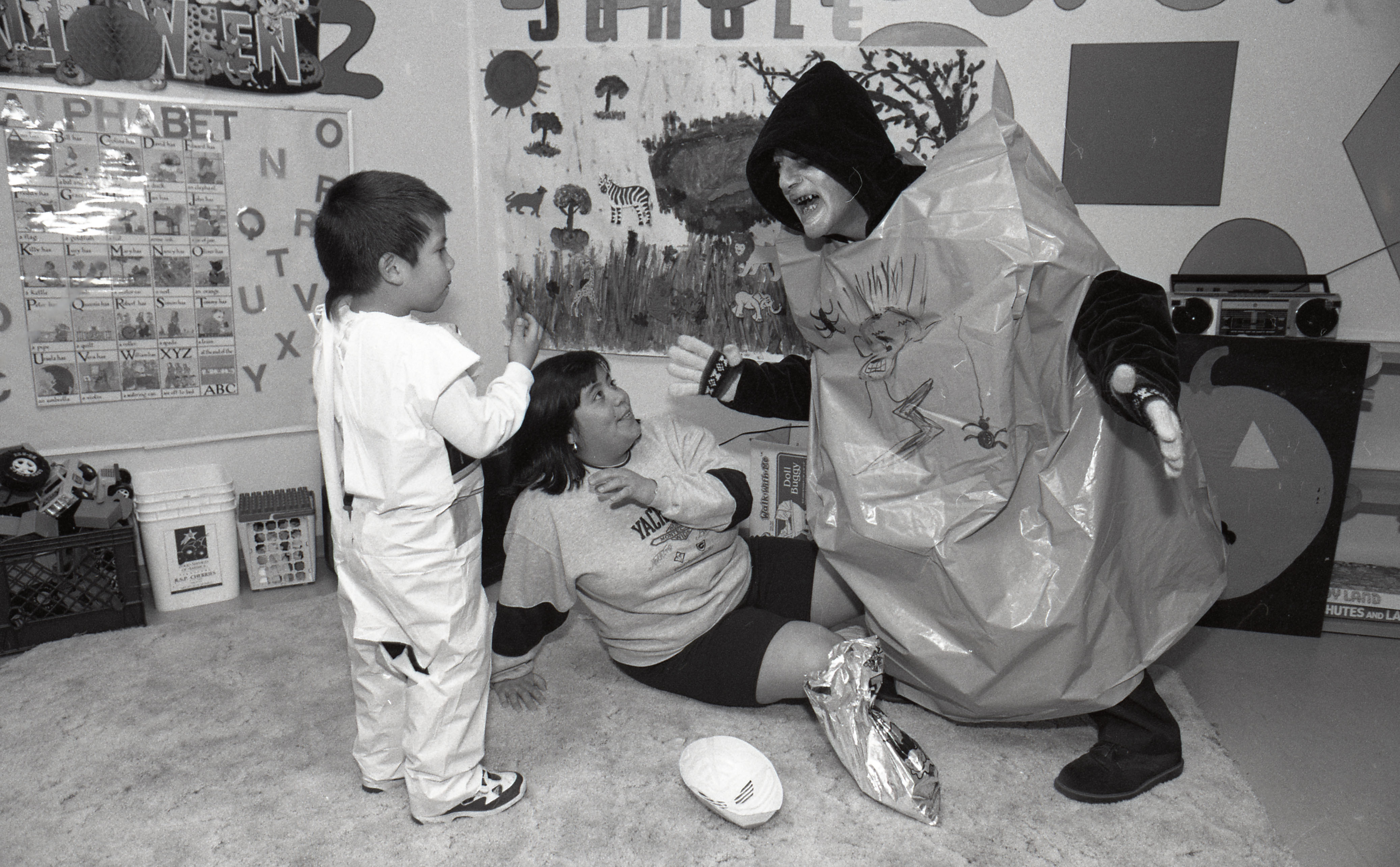
Children were a part of Halloween events as early as 1915. It was then that college students assisted a local elementary school with their Halloween entertainment. They performed the Witch and Ghost Drill. All money raised at the party was used for equipment for the gymnasium of the elementary school.
By the mid-1960s more and more events involving local children were being reported in the school newspaper.
- 1966--A party was held for children at Allen Memorial Hospital
- 1968--Children of married students trick-or-treated Campbell Hall
- 1974--Delta Upsilon hosted a party for Head Start children
- 1975--Catava House of Lawther Hall hosted a Halloween party for Waterloo's Head Start children
- 1977--Pi Kappa Alpha carved pumpkins with Head Start children
- 1980--Clark House and Rainbow House threw a Halloween party for kids from the Jane Boyd Community Center
- 1982--Student Council for Exceptional Children sponsored a party for children from River Hills School
- 1982--Students trick-or-treated for UNICEF
- 1984--A Halloween party for the little children of families who live in the University Apartments was held in the Regents Center
- 1992--Campbell Hall gave a party for children from the Child Development Center
- 1997--A Safe Halloween event was offered for local children before the volleyball game
- 1999--Panhellenic Council hosted their first Panther Cub Club Halloween Bash
- 2000--President and Mrs. Koob held a Harry Potter Halloween party
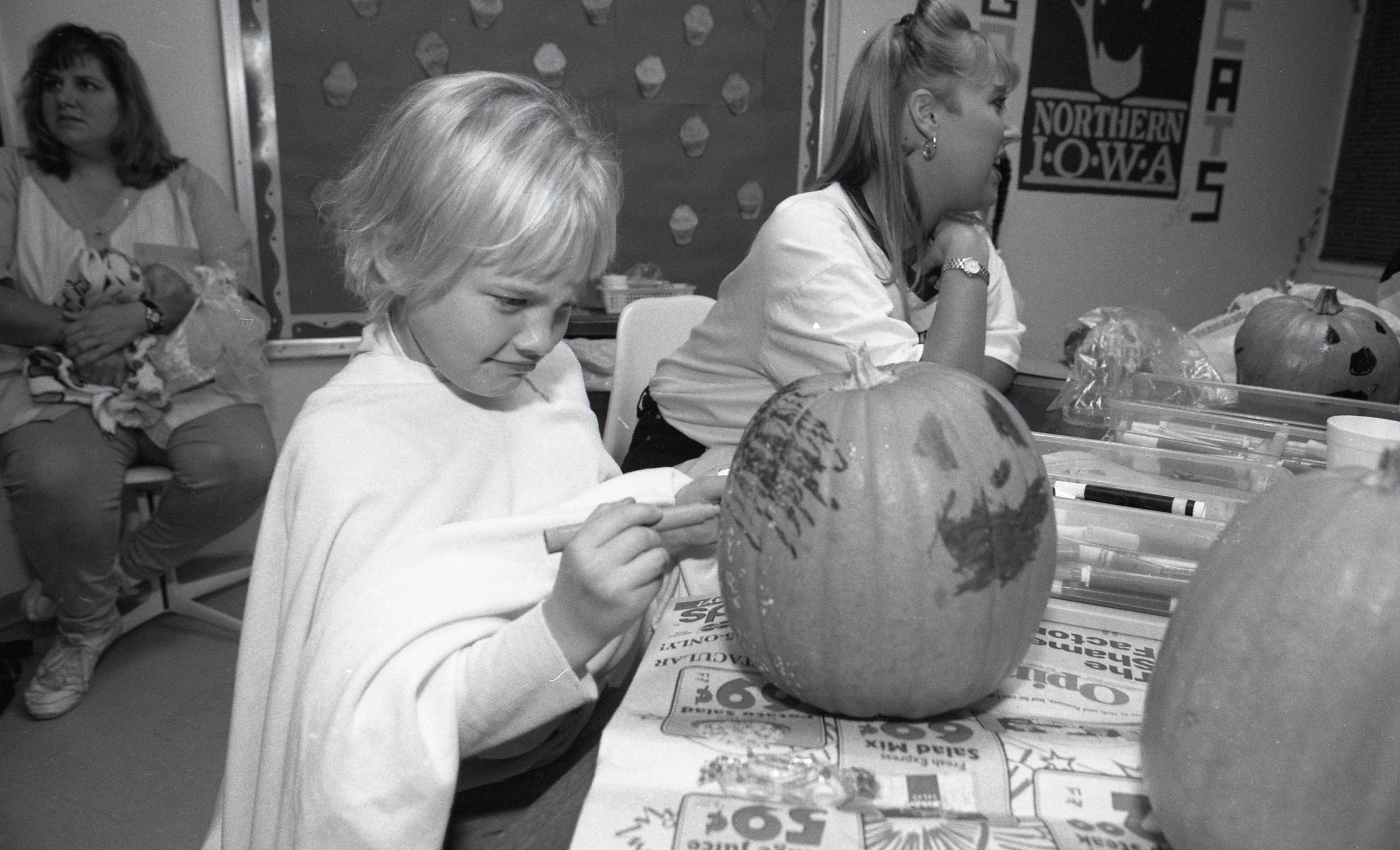
Since the 1960s the School of Music has taken advantage of Halloween by giving concerts that promised "frightful" and "ghoulish" music. Organ performances by Professor Marilou Kratzenstein have been highlights of these shows. Horror movies shown in various locations around campus provided an equally scary time.
Pranks
Few serious Halloween pranks have been reported over the years, but there has been at least some low level of destructive activity since even the school's earliest history. In the 1880s and 1890s, roads were unpaved. Sidewalks, if they existed at all, were made of wood. Walking around or near campus in wet weather was muddy and sometimes dangerous. On Halloween, the wooden sidewalks were pulled up from their moorings and fitted back together haphazardly resulting in loose boards and projecting nails. Walkers would sprain their ankles and wrists, tear clothing, spill their dinner, and break bones. Sometimes students were blamed for this damage, but it generally turned out to have been done by young men from town who were under the influence.
In the middle 1950s a few car hub caps were reported stolen around Halloween. In the middle and late 1970s residence hall food fights became associated with Halloween. Despite measures taken by residence officials, some of these food fights resulted in significant damage to property and equipment.
Ghosts
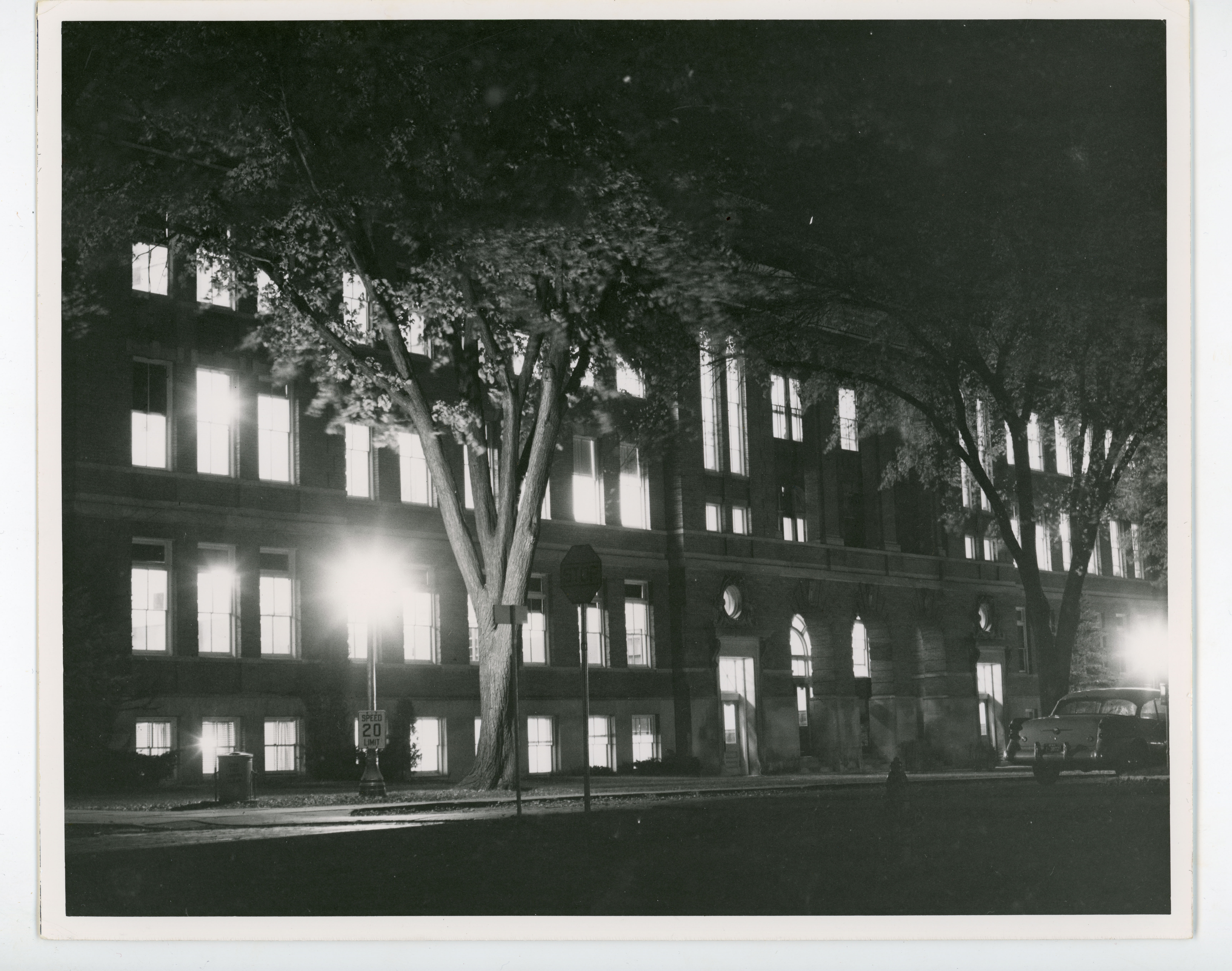
The UNI campus has reputedly been haunted over the years by at least two ghosts: Zelda and Augie.
The exact date when Zelda first appeared is hard to determine, but she is described as early as 1963 in the student newspaper, the College Eye, as "the spirit of the theatre that is neither seen nor heard." She was reported to live in the basement of the Auditorium Building, now known as Lang Hall, which was then the home of college dramatic performances. But Zelda moved with the Theatre Department when the new Strayer-Wood Theatre opened in 1978.
Zelda is generally considered to be a benevolent ghost. The most well-known anecdote illustrating her good nature comes from 1978. During a performance to a sold-out audience, an overhead electrical cable became unhooked and Zelda guided the cable to fall on the only open seat in the theatre.
Theatre people tell stories of other antics by Zelda. They say that she appears when all the lights are shut off, that she yells insults, opens and closes doors, plays the piano, and also sounds like a baby crying.
The Theatre Department has given Zelda Awards to those who have had strange experiences in the theatre.
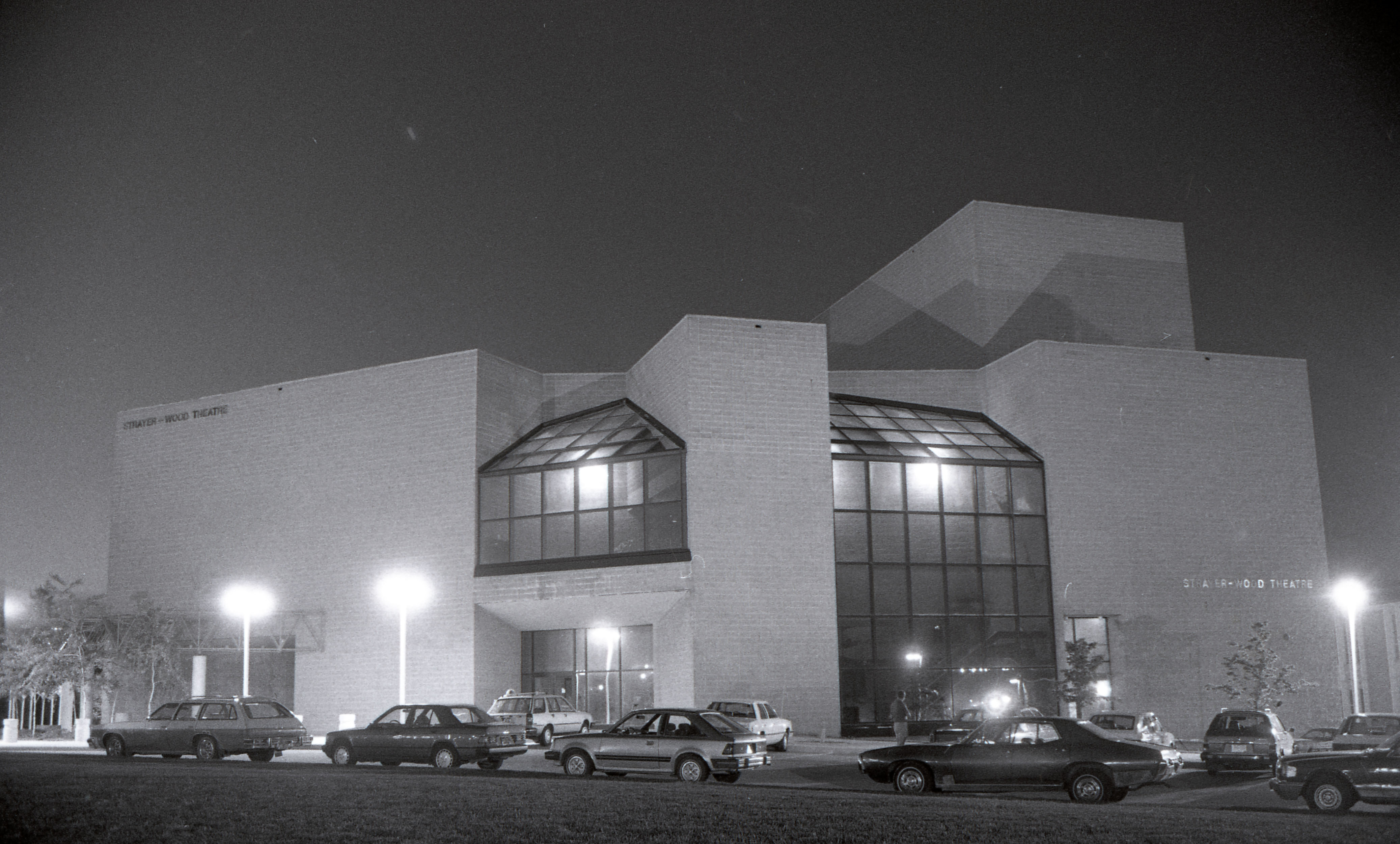
In the Waterloo Courier, October 21, 2009, staff writer Mary Stegmeir reported on a humorous ghost-hunting expedition to the Strayer-Wood Theatre to find Zelda. She and a friend arrived at the theater at 9PM. They regretted having brought a standard flashlight rather than one with a red lens that dedicated ghost-hunters recommend. They called to Zelda. They took temperature readings and attempted to detect abnormal electromagnetic fields. They even tried a Ouija board. But Zelda did not reveal her presence, so the ghost-hunters left the theater at midnight. Mary Stegmeir speculated on why Zelda did not appear:
Maybe Zelda was tired. Or media shy. Or maybe, just maybe, she can spot a bleary-eyed amateur a mile away. Next time, I'll remember the red lens.
The more famous of the two ghosts is Augie, who reputedly resides in Lawther Hall. The legend is that Augie was a World War II soldier, who died in Lawther Hall when it was an infirmary. Augie was first thought to reside in the attic of Lawther Hall but over the years has been seen in all parts of the residence hall.
Lawther Hall
Reports of Augie started appearing in the student newspapers at least as early as 1977. At that time he was reported to have changed the lettering on a bulletin board outside one room to say "Augie will return to haunt Bordeaux House."
More of Augie’s antics were reported in 1992 when a resident assistant claimed to have seen a man in a striped outfit walking down the hall while the hall was closed. The man vanished into the women’s restroom. When the resident assistant went into the restroom, there was no one there.
Augie has also been said to remove posters from the wall; women would wake up to find the posters in the middle of their rooms. He would turn on radios and the radios would continue to play even after having been unplugged. Augie was also reported to have turned on water in the middle of the night. Several times Augie was reputedly spotted in his Army uniform.
Two residents reported in 1999 that they were sitting in the hallway and talking at three o'clock in the morning when they heard footsteps approaching them. They felt something walk through their legs, and it continued walking down the hall. Augie’s face has also been said to appear on the ceiling just before turning lights on or off.
Some residents believe that the scariest story about Augie involves a resident who awoke one night to find that her TV screen was blue. She could hear footsteps moving across the floor. She had to hold tightly on to her sheets when someone started to pull them off from the other end of the bed. At the same time the TV started to flicker and the words "Good Night" appeared on the screen. The resident ended up punching herself in the face when the powerful tugging on her sheets suddenly stopped and her hands flew upward.
A private investigator was hired in the 1970’s after several reports of bizarre happenings. These incidents were documented on the IPBN’s show "Take One" in October 1985.
Haunted Houses
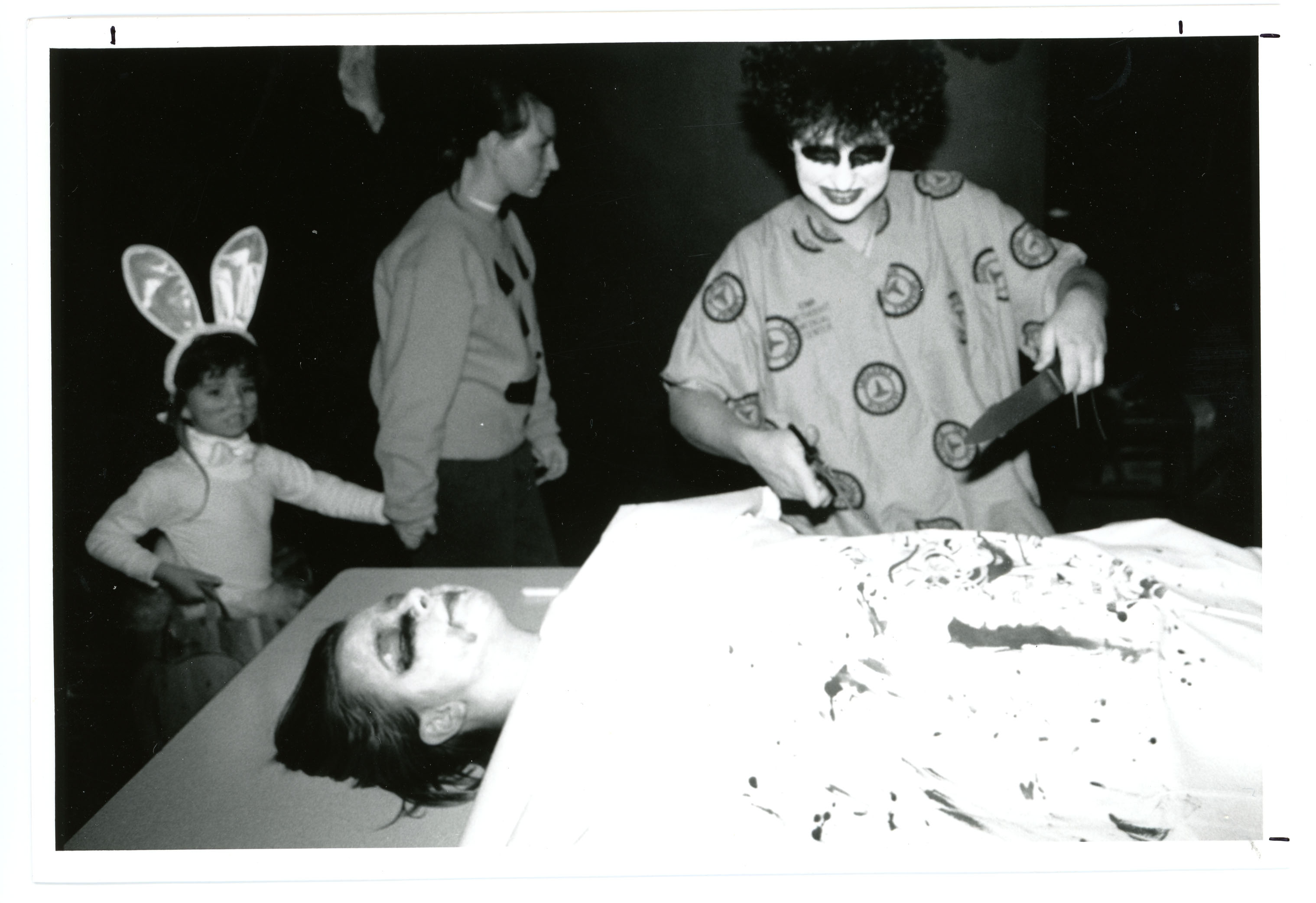
Haunted houses have been hosted both off and on campus by many different organizations. The best known of these is Augie’s Attic. It was held in the attic of Lawther Hall and appears to have started in 1980. The haunted house was used to raise money for residence hall activities. Each house in the residence hall was responsible for designing a portion on the haunted house. Attendance at the haunted house over the years ranged from four hundred to a thousand, drawing not only students on campus but people from the Cedar Falls-Waterloo area as well. The event was moved from the attic area to the basement in 1997 because of fire code regulations and roof damage. That year’s haunted house was the last one held in Lawther Hall.
Theatre UNI hosted its first haunted house in 1993 when rooms were decorated like popular horror movie sets. In 1995 it carried the theme "Gallery of Horrors." The 1996 "House of Terror" frightened 906 visitors and raised $2700.
In 1978 Alpha Delta Pi assisted the Waterloo Jaycees with their haunted house. A masquerade ball was held in conjunction with the Ethnic Minorities Cultural and Education Center's haunted house in 1981. The Hispanic/Latino Student Union hosted a haunted house in 2000. The Greek community used its haunted house in 2000 to raise money for a local charity.
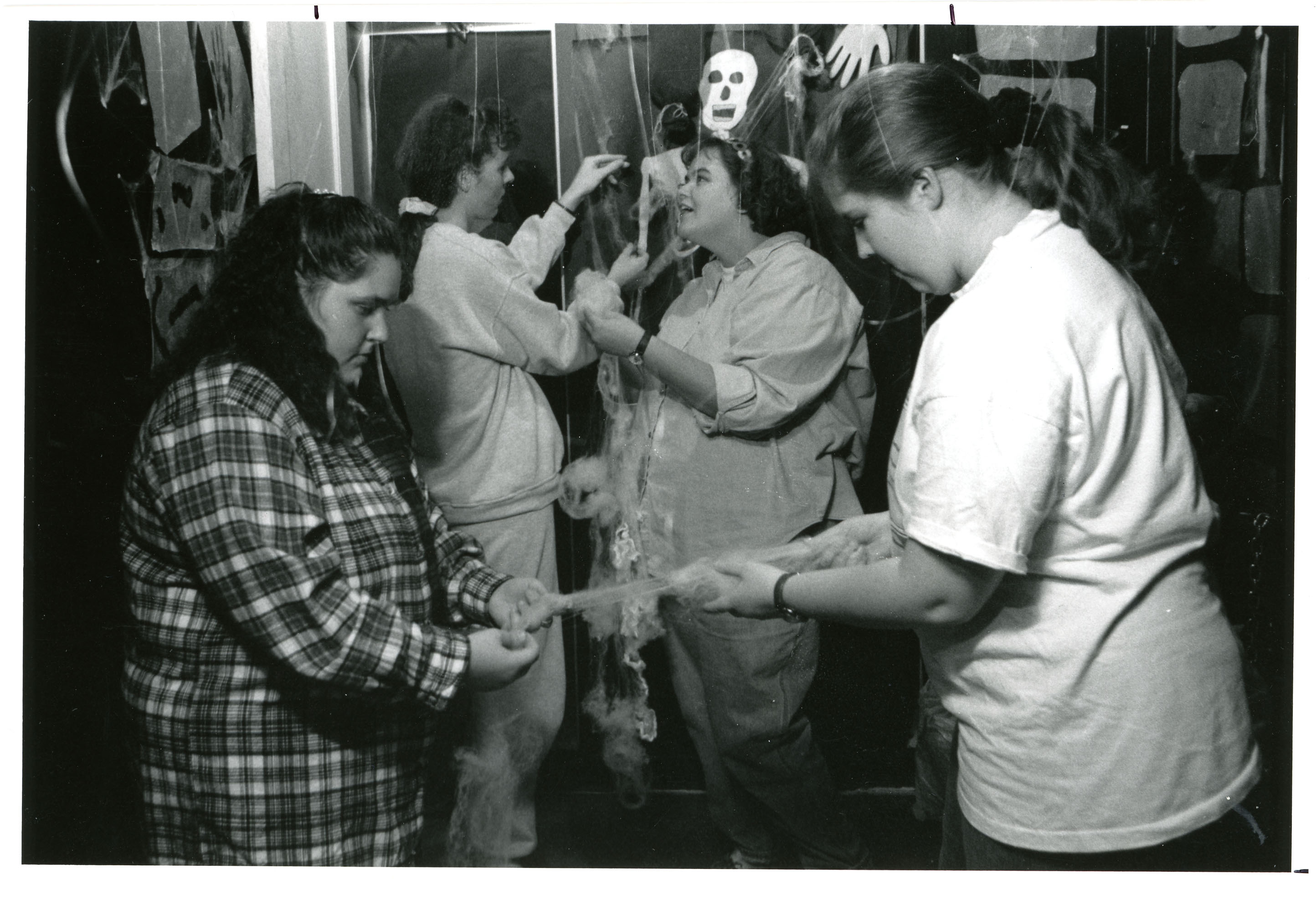
A Creepy Conclusion
Halloween, with its disparate folk and religious roots, has inspired a variety of activities among UNI students over the school's 133-year history. A few chose disruptive, anti-social activities. A larger number, especially in recent years, participated in philanthropic activities that brought happiness into children's lives. But most students of most eras, if they celebrated Halloween at all, seemed to see it as an opportunity to enjoy friends, good food, and good drink--and maybe to feel the thrill of being scared.
Researched and compiled by Library Assistant Gail Briddle; edited by University Archivist Gerald L. Peterson; October 2001; updated October 2009; updated images May 2019.
